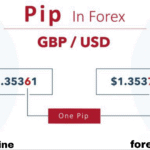What is Leverage and How Does It Work in Forex Trading?
Introduction
Leverage is one of the most powerful tools in forex trading. It allows traders to control larger positions with a relatively small amount of capital. While leverage can amplify profits, it can just as easily magnify losses if not managed correctly.
This article will explain what leverage is, how it works, and how you can use it wisely in your trading strategy.
What is Leverage?
Leverage in forex trading means borrowing capital from your broker to increase your market exposure beyond your actual account balance.
In simple terms, leverage allows you to open positions that are much larger than your own money. It is usually expressed as a ratio, such as 1:10, 1:50, 1:100, or even higher.
Example:
- If you use 1:100 leverage, it means that for every $1 of your capital, you can trade $100 in the market.
- With $100 in your account, you can open a position worth $10,000.
How Leverage Works
Let’s break it down with a real-world scenario.
Example:
- You have $1,000 in your trading account.
- Your broker offers 1:100 leverage.
- This means you can trade up to $100,000 (100 × $1,000).
If you buy EUR/USD at 1.1000 and it rises to 1.1010:
- That’s a 10-pip move.
- If you used 1 standard lot (100,000 units), 10 pips = $100 profit.
Without leverage, you’d need the full $100,000 to open that trade. With leverage, you only needed $1,000.
Margin and Leverage Relationship
To use leverage, you must deposit a margin—a portion of your funds held as a security.
Formula:
Required Margin = Trade Size / Leverage
Example:
- Trade size: $100,000
- Leverage: 1:100
- Required margin = $100,000 / 100 = $1,000
If your account balance falls below the required margin, your broker may close your position to prevent further losses. This is called a margin call.
Benefits of Using Leverage
1. Increased Market Exposure
Leverage lets you trade larger volumes without needing large capital.
2. Enhanced Profit Potential
A small price movement can generate substantial profits if properly managed.
3. Capital Efficiency
Traders can diversify and trade multiple pairs with limited funds.
Risks of Using Leverage
While leverage increases the potential for profits, it also increases risk significantly.
1. Amplified Losses
A small adverse move in the market can lead to large losses.
2. Margin Calls and Stop-Outs
If your equity drops below the margin requirement, your broker may close positions automatically.
3. Psychological Pressure
High leverage can lead to emotional trading, poor decision-making, and overtrading.
Real-Life Risk Example
Let’s say you trade with 1:500 leverage:
- You deposit $100.
- You open a trade worth $50,000.
A 20-pip adverse move could wipe out your entire account because the position size is too large relative to your balance.
How to Use Leverage Responsibly
1. Start Small
Use low leverage (like 1:10 or 1:20) until you understand how it affects your trades.
2. Use Stop-Loss Orders
Always protect your positions with a stop-loss to limit potential losses.
3. Manage Position Sizes
Never risk more than 1–2% of your account on a single trade, regardless of leverage.
4. Monitor Margin Levels
Keep track of your margin and equity to avoid surprise margin calls.
5. Practice with Demo Accounts
Test different leverage levels on a demo account before using real money.
Common Leverage Levels by Region
Leverage limits vary based on regulations:
| Region | Typical Max Leverage |
|---|---|
| EU (ESMA rules) | 1:30 for major pairs |
| US (CFTC/NFA) | 1:50 for all pairs |
| Australia | 1:30 for retail traders |
| Offshore brokers | Up to 1:1000 or more |
Be aware of your broker’s regulatory body and how it may limit your leverage.
Comparing Trades With and Without Leverage
| Metric | With Leverage (1:100) | Without Leverage |
|---|---|---|
| Capital Invested | $1,000 | $100,000 |
| Position Size | $100,000 | $100,000 |
| Pip Movement | +10 pips | +10 pips |
| Profit from Trade | $100 | $100 |
| Capital at Risk | $1,000 | $100,000 |
You earn the same amount, but with significantly less capital invested when using leverage.
Conclusion
Leverage is a double-edged sword. It can help you maximize profits with a smaller investment, but it can also wipe out your account if used recklessly. The key to successful leveraged trading is discipline, risk management, and education.
Use leverage cautiously and always consider the worst-case scenario before entering a trade. It’s better to grow your account slowly and sustainably than to gamble on high-leverage trades that can destroy your capital overnight.


